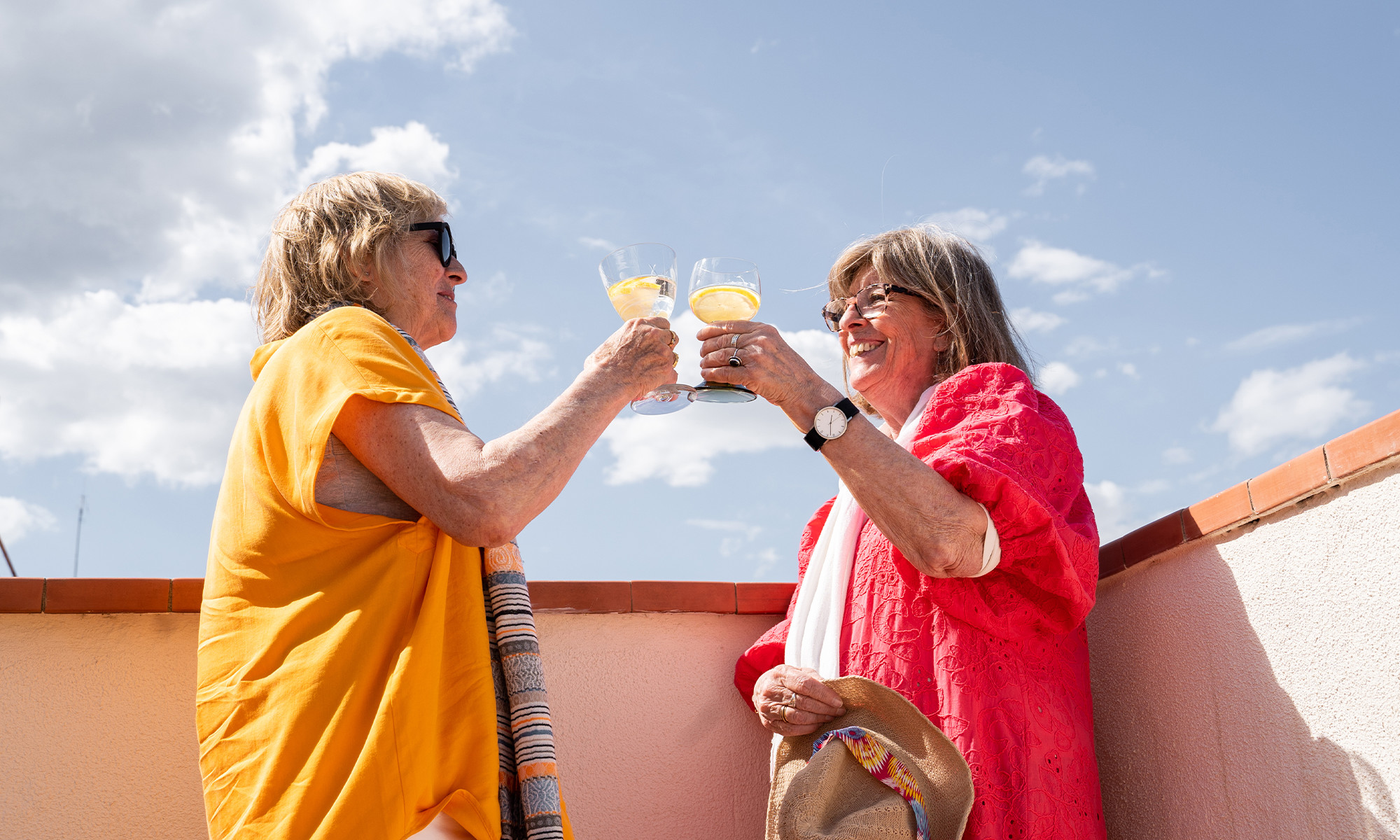Learning How to Listen
Playwright Sarah Ruhl discusses how writing has helped her cultivate devotion and attention. The post Learning How to Listen appeared first on Tricycle: The Buddhist Review.

For Pulitzer Prize finalist Sarah Ruhl, playwriting is akin to religion. “I think it has to do with the ritual aspect of it,” she told Tricycle. “You’re all coming together, a group of people is ideally feeling something at the same time, and you’re conjuring an invisible world through the seen world.”
As a playwright, Ruhl has long been fascinated by the relationship between art and religion, as well as the parallels between the role of presence and attention in Buddhism and in theater. As she writes in her new essay collection, Lessons from My Teachers: From Preschool to the Present, presence is one of the most powerful gifts that a teacher can give—and one of the hardest qualities to pin down in words. In a sense the collection is an ode to presence—to the teachers she has had over the course of her life, both inside and outside the classroom, and to the lessons they have transmitted through their attention and devotion to their craft.
In a recent episode of Tricycle Talks, Tricycle’s editor-in-chief, James Shaheen, sat down with Ruhl to discuss the teachers and tasks that have helped her learn how to listen, how she thinks about the value of a work of art, and why she aspires to always be a student.
To start, can you tell us a bit about your new book and what inspired you to write it? I teach a class at Yale called “Lessons from My Teachers,” and the inspiration for the class was that I wanted my students to know there wasn’t one entry point to write a play. There wasn’t one way in; there wasn’t a guru mentality that I was trying to communicate to them about how to write a play. And as I tried to envision multiple entry points for them, I taught the work of my teachers, and I also tried to teach how they taught. At one point I thought, “Maybe there’s a book in this class somehow,” and I started thinking about all the magnificent teachers I’ve had from preschool to the present, and I started doing little portraits of each of them.
You start the book with some of your earliest teachers, including those who first introduced you to writing, and you say that over time playwriting became something of a religion for you. What do you mean by that? I think theater is quite religious to many of its practitioners, and I don’t know if it’s partly being cut off from religiosity—you know, the idea that theater is in a secular domain in, say, New York City, but the zeal with which we pursue it is quite religious. I think it has to do with the ritual aspect of it: You’re all coming together, a group of people is ideally feeling something at the same time, and you’re conjuring an invisible world through the seen world. I think all of that is a spiritual practice. So when I say it became something of a religion for me, I guess I mean that, and also that it became a profound practice for me. It became central to my life.
One of the threads that runs through the book is the art of listening, and more specifically the teachers and tasks that help you learn how to listen. You quote the director Anne Bogart, who writes, “Listening is a basic ingredient of attention, and it can be learned and practiced. It is a discipline and an action in the world, and the results are nearly magical. To be heard, really heard, by another person is to be healed.” So what have you learned about listening as a discipline? I think Anne Bogart says it all. It’s funny, when you read that quote, I also think about my husband Tony, who’s a psychiatrist. Outwardly, our professions don’t have that much in common, and his listening is so private. But I do think Anne is right that with the right kind of listener, there’s a healing that takes place. With theater, there are so many different kinds of listening: There’s the writer listening for the idea at inception. There’s the director listening to the actors as they first say the lines out loud, and even just the act of that deep listening and reflecting back to the actor is a way of directing them without saying a word. There’s the listening that the audience brings to bear on the production. And then there’s the listening of the playwright to the audience to try to massage what’s not working in the play, when you notice the listening getting attenuated.
With the right kind of listener, there’s a healing that takes place.
In a similar vein, you talk about the importance of presence, which certainly has connotations in the Buddhist world and in the theater world. So what do you mean when you talk about presence? You use the phrase “sanctuaries of presence.” I don’t always know how to talk about presence. In a way, when I wrote this book, I wanted to write a whole book about presence. And yet I found it so hard to talk about that it made more sense to me to talk about my teachers. Theater is always conjuring a kind of presence, which is a focused attention, which is like meditation. When we talk about someone’s stage presence, what do we mean? We mean a kind of charisma, and we mean a kind of sustained focus on the task, on whatever task they’re doing. I think finding a way to be truly present in the present moment is something that a Buddhist practice helps you with, and also something that a really good theater teacher can help you with.
One of your biggest theater teachers was the playwright Paula Vogel, and you say she taught you that sometimes you have to look at grief sideways or upside down in order to be able to write about it. So what does it mean to look at grief sideways? Paula said that just as you wouldn’t look at the sun directly, you don’t look at grief directly. She was really influenced by Russian formalists like Viktor Shklovsky, who talked about defamiliarization and making the familiar strange and looking askance at something. She would give the example of driving and how it’s this automatic function after a while, and you get in the car and you’re driving and suddenly you’re at your destination, and you don’t remember how you got there. She would talk about the function of art being to wake you up and notice those processes that have become automatic.
Paula would give little writing prompts that would help you turn yourself upside down. She would say, “Write a play that’s impossible to stage,” which is kind of like a Zen koan because once you do the assignment, you realize that anything really is possible to stage, depending on how you parse it. When I was 20 and had just lost my father, she gave me the assignment, “Write a play in which a dog is the protagonist,” and so I wrote a play about the family dog waiting for him to come home. It was a way of accessing that grief from a different point of view, which let me write about it, whereas at that time, if I tried to write about my own self in relation to the emotion, I just couldn’t even begin.
Another lesson you learned from Paula Vogel is the importance of gifts and acts of generosity. Can you say more about how you’ve come to understand generosity? And I’m curious, do you think about your writing as an offering or a gift? I do, and a couple things affected me in terms of thinking of plays as gifts. The first was Paula’s incredible example of generosity, which she has modeled for a whole generation of playwrights. When I had just finished grad school, I got pyelonephritis, which is a painful kidney infection. I didn’t have health insurance anymore because I was done with my MFA, and I was reluctant to go to the doctor. Paula said, “You look really sick. You should go see my acupuncturist, and you should go to the doctor.” I finally went to the doctor and got some antibiotics, but I still wasn’t well, so she said, “Go to my acupuncturist, you still don’t look well.” I said, “Oh, I can’t really afford it,” and she slipped a check for $500 under my door. I was definitely not going to take it. And then she said, “Look, when I was your age, my partner had MS, and we had no health insurance, and a woman in our building gave us $500 for healthcare, and she said, ‘Don’t give it back. Just keep it going.’” That story allowed me to take the gift, and then I’ve recirculated that gift, which just keeps going and going.
The other thing that influenced my thinking about gift giving and art making is the book The Gift by Lewis Hyde, who’s a wonderful writer and poet. He writes about poetry in the capitalist economy and how you make sense of yourself as a poet, and he basically says that as an artist or a poet, you’re in a gift economy, and yet you’re in this larger economy that’s very different. And so sometimes I’ll have my students read the first chapter of The Gift at the beginning of the semester and write what I call a gift play to a fellow student in the program, and I find that reorienting.
Thinking of art-making as gift-giving as opposed to personal catharsis has been helpful to me in terms of staying in the field. I think as a young person, I was content to have my own personal catharsis. And the older I get, it doesn’t feel as satisfying for a life in the arts. There’s a solipsism, and it’s harder for me to stay in that kind of personal bubble—I feel like it makes the art more voyeuristic when you’re watching someone have a catharsis as opposed to watching an artist give someone a gift. And the more I learned about meditation and classical foundations for meditation, it was really interesting to me that some teachers would emphasize, well, yeah, you can meditate, but if you really want to do a good job of it, you should start with generosity—that there are these ethical practices that you begin with, and then it’s much easier to meditate once that’s in place.
In one chapter you quote the Dalai Lama, who once said that the only measure of a work of art is how much it changes the artist. So how do you understand this quote, and how does it relate to your own experience of writing and making art? I love the idea that the measure of the art is how much it changes the artist. You know, it’s not the critical reception. It’s not how much money is made. It’s not some objective goodness. It’s how the artist grows and stretches aesthetically or ethically or in terms of their own wisdom. And I think it’s very hard as an artist to reflect on that yourself. It’s hard to know how you’ve changed, or how writing a piece of art has changed you. But I know in my bones that different plays have cost me or changed me or helped me move from one place in my life to another place, and I think that’s incredibly valuable.
I know in my bones that different plays have cost me or changed me or helped me move from one place in my life to another place, and I think that’s incredibly valuable.
You also quote a line from Khenpo Pema Wangdak, who told you, “Art and religion aren’t very different, and someone’s got to do it.” So can you tell us about this line and what you’ve learned from Lama Pema? Oh, I love him so much. I met him when he was advising this production of a play I was doing at Lincoln Center, The Oldest Boy. The play involves a student who loses their teacher looking for the reincarnation of that teacher. I remember he laughed so hard after he said that—“Art and religion aren’t very different, and someone’s got to do it,” and then just laughing. I feel like he meant someone has to contend with the meaning of our lives—suffering, death, mortality, someone has to make sense of it, or if not make sense of it, at least contend with it. And I think that’s the overlap in my mind between art and religion.
Along those lines, you say that a friend said to you, “Whatever arises for you there, that is the perfect teaching.” So to turn your own question back on you, how can we be attentive students to the teachings unfolding at every moment all around us? I mean, I think that’s the task: to go about our business and view obstacles as teachers and to view ourselves as students at every point in our lives so that we don’t become ossified or smug or automatic. I think having the curiosity of a student forever is something to aspire to, and to see even the most irritating, pesky, awful life events as an occasion for teaching is a good way to go about your day if you can.
This excerpt has been edited for length and clarity.

 AbJimroe
AbJimroe 





























